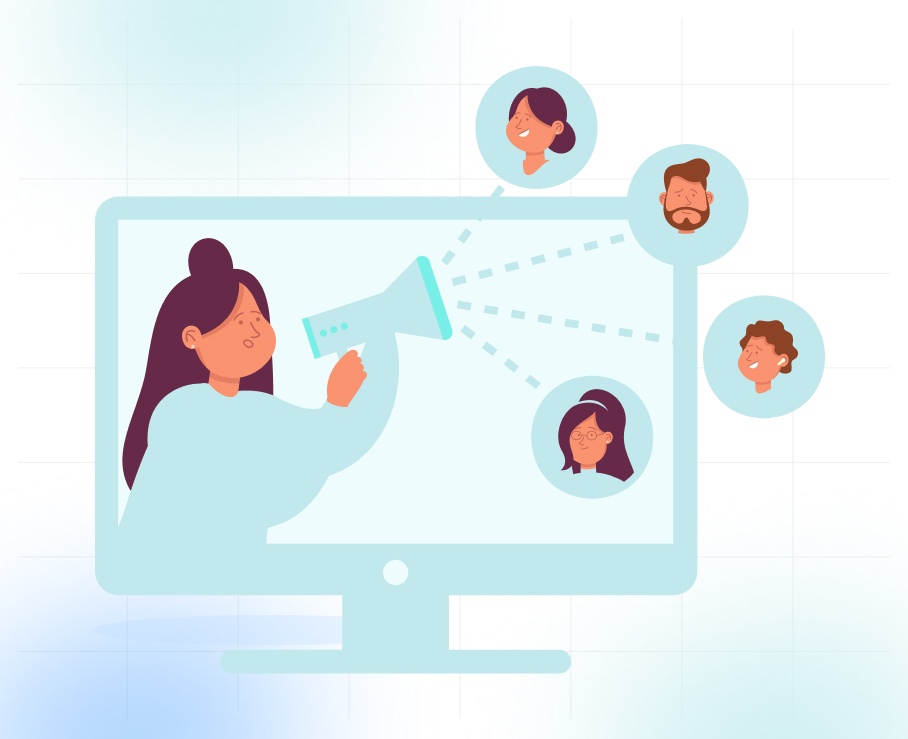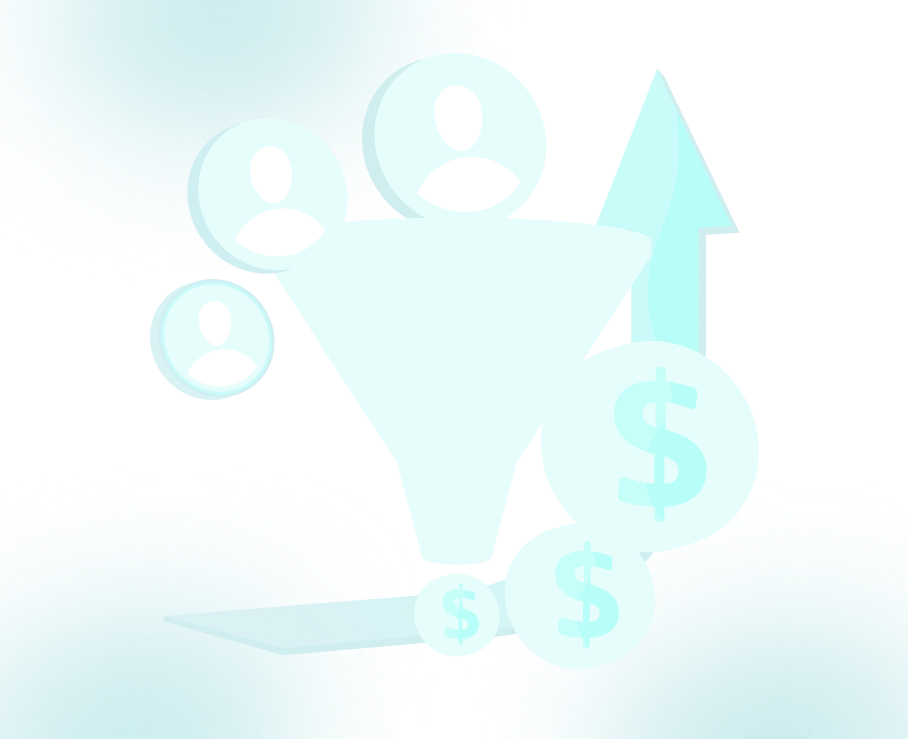
Ultimate Guide to Lead Generation Strategies 2025

An ultimate lead generation plan is a cornerstone for Business-to-Business (B2B) business growth, helping you stand out in your industry, connect with potential clients, and guide them seamlessly through their buying journey.
Despite its importance, many marketers still find lead generation to be one of the toughest challenges.
Did you know?
61% of marketers report that generating traffic and leads is their biggest obstacle.
It’s understandable why it can feel overwhelming. Building an effective system requires creating compelling content, driving targeted traffic, converting prospects, and qualifying leads before passing them to your sales team.
But generating leads doesn’t have to be daunting. This comprehensive guide breaks down every stage of crafting an ultimate lead generation plan into clear, actionable steps.
Before diving into strategies, it’s important to clarify what lead generation actually means.
Quick Overview:
- Attract, engage, and capture potential customers to build an effective sales pipeline. Differentiate leads (MQL, SQL, PQL, Service Qualified) for targeted follow-ups.
- Define your Ideal Customer Profile (ICP), use BANT framework, lead scoring/grading, and nurture leads with emails, retargeting, educational content, and direct engagement.
- Understand buyer personas, create engaging content for all funnel stages, attract the right audience via SEO, social media, paid ads, and partnerships.
- Use gated content, optimized landing pages, clear CTAs, and marketing automation to collect and qualify leads for maximum ROI.
- Track metrics like MQLs, SQLs, conversion rates, CPL, engagement, lead sources, and revenue impact using analytics and CRM tools to refine the ultimate lead generation plan.
What is a Lead?
A lead is an individual or organization that has shown interest in your company’s products or services but may not be ready to make a purchase. This interest is typically expressed by sharing contact information, like a name and email, in exchange for valuable content or offers.
It’s important to differentiate leads from prospects. A lead is a potential customer who needs to be qualified before becoming a prospect, someone who is a good fit for your business and may be ready to engage in the future.
Leads can be categorized based on their level of interest:
- Marketing Qualified Lead (MQL): Shows interest through marketing interactions such as downloading content, attending webinars, or submitting forms. They are more likely to convert than general contacts.
- Sales Qualified Lead (SQL): Vetted by the sales team and ready for direct sales engagement. SQLs demonstrate a stronger intent to purchase and closely match your ideal customer profile.
- Product Qualified Lead (PQL): Engages with your product, often via a free trial or freemium version, and exhibits behaviors indicating readiness to become a paying customer.
- Service Qualified Lead: Expresses interest in your services, typically through consultations, demos, or requests for additional information.
How Does Lead Generation Work?
Lead generation is the process of attracting and engaging your target audience until they willingly share their information. This involves driving qualified traffic, capturing visitor details, and nurturing leads that align with your buyer personas.
Essentially, it’s the first step in building a meaningful relationship with a potential customer.
Lead generation typically falls into two main approaches:
Inbound Lead Generation
By addressing the audience’s pain points and interests, businesses convert visitors into leads through calls-to-action, landing pages, and lead capture forms. Inbound lead generation is cost-effective, sustainable, and ideal for nurturing leads toward long-term loyalty.
Outbound Lead Generation
While more direct and sometimes intrusive, outbound lead generation can deliver faster results and is especially useful for targeting specific high-value prospects. This may involve cold calls, emails, direct mail, and targeted advertising. The aim is to spark interest in prospects who may not be actively searching for your product or service.
Also Read: Top 8 Outbound Lead Generation Strategies for 2025
Why Is Lead Generation Important?
For B2B businesses, the sales cycle can be long and complex since over 30% of B2B deals take one to three months to close. This makes lead generation a critical component of business growth.
Here are some key reasons why lead generation matters:
- Drives consistent revenue growth: A reliable lead generation system ensures your sales team always has qualified prospects to engage, preventing revenue gaps and dry sales periods.
- Shortens the sales cycle: By capturing potential customers’ information early, you gain the ability to guide and influence their decision-making process from the very start.
- Improves sales efficiency: Lead qualification helps you identify which prospects are most likely to convert. This means your team can focus time and resources on high-value opportunities.
- Enhances brand visibility and authority: Generating leads often involves creating valuable content and campaigns that establish your brand as a trusted industry resource.
- Supports long-term business scalability: A well-designed lead generation system that produces high-quality leads allows your organization to scale without proportionally increasing sales costs.
How Do Lead Qualification and Nurturing Work?
Capturing a lead is just the first step in the sales process. To maximize conversions, you need to qualify your leads to identify which ones are most likely to become customers, and nurture them through targeted communications that guide them down the sales funnel.
Step 1: Define Your Ideal Customer Profile (ICP)
An ICP helps you focus on leads that fit your target market and have the highest potential to convert. Consider factors such as:
- Industry or business type
- Company size and revenue
- Job title or decision-making authority
- Pain points or challenges your product can solve
Defining your ICP ensures marketing and sales teams spend time on prospects that matter most.
Step 2: Use Lead Qualification Frameworks
Lead qualification allows you to prioritize prospects who are ready to engage. One widely used framework is BANT:
- Budget: Does the lead have the financial capacity to invest in your product or service?
- Authority: Does the lead have the power to make purchase decisions?
- Need: Does the lead’s problem align with the solutions your product offers?
- Timing: Is the lead planning to make a purchase soon?
By evaluating leads using BANT, you can focus your efforts on high-potential prospects.
Step 3: Lead Scoring
Lead scoring assigns numerical values to prospects based on their behavior and engagement:
- Downloading an ebook, attending a webinar, or requesting a demo
- Visiting key product pages or spending time on your website
- Engaging with email campaigns or social media posts
The higher the score, the closer the lead is to conversion. Lead scoring helps sales teams prioritize follow-ups efficiently.
Step 4: Lead Grading
While scoring measures engagement, lead grading evaluates how well a prospect fits your ICP:
- High-grade leads match your target market and have the right company size, industry, or role
- Low-grade leads may require more nurturing or may not be a good fit at all
Combining scoring and grading gives a holistic view of a lead’s quality, so your team can focus on the best opportunities.
Step 5: Lead Nurturing
Nurturing is about building trust and guiding leads through the sales funnel until they’re ready to make a purchase. Effective lead nurturing strategies include:
- Email campaigns: Send personalized content based on the lead’s stage in the buyer journey
- Retargeting ads: Remind prospects of your product through social media or display ads
- Educational content: Provide blogs, ebooks, webinars, or videos to address their challenges
- Direct engagement: Offer demos, free trials, or live consultations to move leads closer to conversion
The goal is to maintain consistent, helpful communication that keeps your brand top-of-mind until leads are ready to buy.
Here’s a concise 20-word version for your case study content:
TLM helped a Michigan staffing agency fill its sales pipeline, generating 25 qualified IT leads in eight months efficiently. Read here to know more about it.
What Are Some Methods for Nurturing Leads?
Once you’ve qualified your leads, the next step is lead nurturing, guiding prospects through the buyer journey with targeted, relevant communication. Effective nurturing helps build trust, address pain points, and increase the likelihood of conversion. Here are some proven methods:
1. Personalized Email Campaigns
Email remains one of the most effective lead nurturing tools. To make the most of it:
- Segment your audience based on buyer persona, stage in the funnel, or behavior
- Send content tailored to their needs, such as educational articles, case studies, or product updates
- Automate sequences to provide timely follow-ups and drip campaigns
2. Retargeting Campaigns
Retargeting keeps your brand visible to prospects who have shown interest:
- Display ads on social media or across websites they visit
- Promote content related to the pages or products they viewed
- Reinforce your message without being intrusive
3. Educational Content Marketing
Provide value through informative content that addresses your leads’ pain points:
- Blogs and articles explaining industry trends or best practices
- Webinars, workshops, or video tutorials demonstrating solutions
- Ebooks or whitepapers offering in-depth guidance
This approach positions your brand as a trusted authority.
4. Social Media Engagement
Social channels can nurture leads by:
- Sharing helpful tips, insights, and resources
- Participating in conversations and responding to questions
- Using LinkedIn, Twitter, or Instagram to maintain visibility and credibility
5. Direct Engagement and Consultations
Sometimes personal interaction is the most effective form of nurturing:
- Offer free consultations, product demos, or trials
- Use live chat or chatbots to answer questions in real time
- Follow up on inquiries with tailored recommendations
5 Effective Ways to Generate Leads
Now that you understand the fundamentals of lead generation, it’s time to tackle the next step: actually generating leads. The process of lead generation can be simplified into five key steps:
1. Understand Your Buyer Personas
Buyer personas are semi-fictional representations of your ideal customers. They help you understand the challenges, goals, and behaviors of your audience, enabling you to create content that resonates.
How to Build Your Buyer Personas
Use a combination of quantitative and qualitative data:
Quantitative data (hard numbers):
- Age, gender, job title, location, industry
- Sources: web analytics (Google Analytics), visitor identification tools
Qualitative data (emotional insights):
- Language they use to describe problems
- Daily challenges and desires
- Sources: surveys, interviews, and input from sales, support, or business development teams
Combining both helps you truly understand your audience, not just logically, but emotionally, so your content becomes highly actionable.
2. Create Engaging Content
Once you know your audience, the next step is to create valuable, problem-solving content that builds trust and nurtures interest. Content should attract potential customers, answer their questions, and guide them through the buying journey.
Content ideas for different stages of the funnel:
- Top of the Funnel (Awareness): Blogs, social media posts, podcasts, and videos that educate and inform.
- Middle of the Funnel (Consideration): Ebooks, webinars, newsletters, and whitepapers that demonstrate authority and insight.
- Bottom of the Funnel (Decision): Case studies, comparison guides, product demos, and testimonials that encourage conversions.
Pro Tip: Repurpose your content across channels. For instance, a blog post can become a short video, infographic, or email snippet to expand reach efficiently.
3. Attract the Right Audience
Having great content isn’t enough if it doesn’t reach the right people. Focus your efforts on driving qualified traffic using the right mix of organic and paid channels.
Key strategies include:
- Search Engine Optimization (SEO): Optimize your content for keywords your buyers are searching for.
- Social Media Marketing: Engage with communities on LinkedIn, X (Twitter), or niche forums where your audience is active.
- Paid Advertising: Use platforms like LinkedIn Ads or Google Ads to target specific demographics or industries.
- Partnerships and Co-Marketing: Collaborate with complementary businesses to reach new, relevant audiences.
The goal is not just traffic. It’s targeted traffic that’s most likely to convert.
4. Capture Their Information
Once visitors engage with your content, it’s time to turn them into leads by encouraging them to share their contact details. This is where lead magnets and optimized landing pages come into play.
Effective ways to capture leads:
- Offer valuable gated content (e.g., guides, checklists, or templates).
- Use clear and concise forms, and only ask for essential information.
- Incorporate strong Calls-To-Action (CTAs) throughout your website and content.
- Experiment with pop-ups, exit-intent offers, and chatbots to increase conversions.
Remember that the more value you offer upfront, the more willing people are to share their information.
5. Qualify Your Leads
Not all leads are created equal. Qualifying helps you focus on those most likely to become customers. By understanding their readiness to buy, you can prioritize follow-ups and tailor communication accordingly.
Ways to qualify leads effectively:
- Use a lead scoring system to rank leads based on actions (e.g., downloads, demo requests, or email engagement).
- Segment your leads into categories, hot, warm, and cold, to personalize your nurturing efforts.
- Use marketing automation tools to track behavior and trigger the right messaging.
This ensures your sales team focuses on high-value prospects, improving conversion rates, and maximizing Return On Investment (ROI).
Also Read: Distinction Between Lead Generation and Lead Nurturing
How To Measure the Success of the Ultimate Lead Generation Plan
Measuring the effectiveness of your lead generation efforts is crucial to understanding what works, identifying areas for improvement, and maximizing ROI. By tracking the right metrics, you can make data-driven decisions and optimize your campaigns over time.
1. Track Key Lead Metrics
Some essential metrics to monitor include:
- Number of Leads Generated: Total leads captured over a given period. Helps you assess overall campaign reach.
- Marketing Qualified Leads (MQLs): Leads that meet predefined engagement or demographic criteria, indicating readiness for sales follow-up.
- Sales Qualified Leads (SQLs): MQLs that sales teams have verified as likely to convert. Measures lead quality and alignment with your ideal customer profile.
- Conversion Rates: Percentage of leads that progress through each stage of your funnel, from visitor to lead, and lead to customer.
- Cost Per Lead (CPL): Total marketing spend divided by the number of leads generated. Indicates the efficiency and ROI of your campaigns.
2. Monitor Engagement Metrics
Lead quality often reflects engagement levels:
- Email open and click-through rates
- Content downloads and video views
- Webinar attendance or participation
- Social media interactions (likes, shares, comments)
High engagement indicates your content is resonating with your audience.
3. Evaluate Lead Source Performance
Identify which channels generate the most and the highest-quality leads:
- Organic search (SEO)
- Paid advertising (Google Ads, LinkedIn Ads)
- Social media campaigns
- Co-marketing or referral partnerships
Analyzing performance by source allows you to focus resources on the most effective channels.
4. Measure Revenue Impact
The ultimate goal of lead generation is to drive sales. Track:
- Lead-to-Customer Conversion Rate: Percentage of leads that become paying customers
- Revenue Generated per Lead: Average revenue from each converted lead
- Customer Lifetime Value (CLV): Long-term revenue potential of leads acquired through campaigns
5. Use Analytics and CRM Tools
Leverage marketing automation and CRM platforms to track and report on all your metrics:
- HubSpot, Salesforce, or Marketo for comprehensive dashboards
- Google Analytics for website traffic and conversion tracking
- Lead scoring and attribution tools to see which touchpoints influence conversions
Conclusion
Lead generation is the foundation of a successful marketing and sales strategy. By understanding your audience, creating engaging content, and using the right channels, you can attract high-quality leads and guide them through your sales funnel.
Effective lead qualification and nurturing ensure that your marketing efforts focus on prospects most likely to convert, while tracking key metrics helps you measure success and continuously improve your campaigns.
Remember, lead generation is not a one-time task. It’s an ongoing process of attracting, engaging, and converting prospects. With the right strategy, tools, and insights, you can build a predictable pipeline of qualified leads that drives growth and strengthens your business.
Build a predictable sales pipeline with TLM's B2B lead generation services. Use targeted email campaigns to attract, qualify, and convert high-quality leads. Partner with TLM to implement your ultimate lead generation plan and drive consistent business growth. Get started with TLM today.
FAQs
1. What is a lead generation plan?
A lead generation plan is a strategic roadmap designed to attract, engage, and convert potential customers. It outlines target audiences, marketing tactics, content strategies, and lead qualification processes to drive sales growth.
2. What are the two types of lead generation?
The two types are inbound and outbound lead generation. Inbound attracts prospects through content, SEO, and social engagement, while outbound actively reaches out via cold calls, emails, or targeted ads.
3. What is the best form of outbound lead generation?
The best form of outbound lead generation combines personalized email campaigns, targeted LinkedIn outreach, and data-driven prospecting, ensuring relevant communication that captures attention, builds trust, and drives high-quality B2B conversions.
4. What is a soft lead in sales?
A soft lead is a prospect showing mild interest but not ready to purchase. They may engage with content or sign up for updates, but need nurturing to convert.
5. What is quality lead generation?
Quality lead generation focuses on attracting prospects who closely match your ideal customer profile, demonstrating genuine interest and high conversion potential, ensuring marketing and sales efforts are efficient and impactful.





